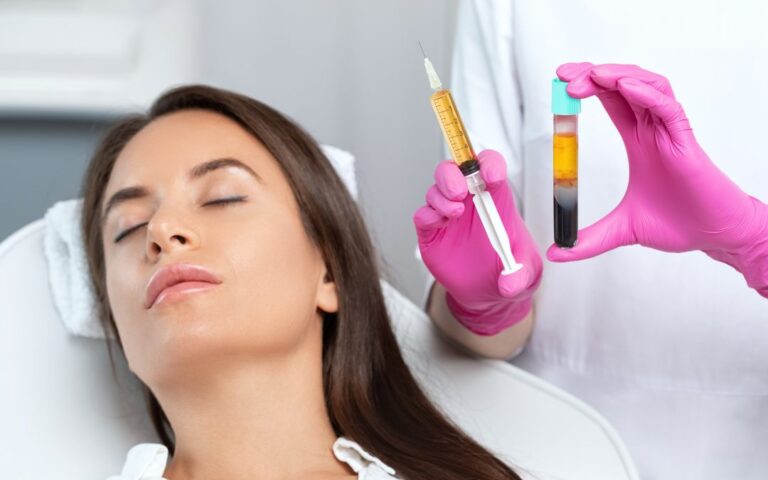Key Takeaways
-
Microneedling with PRP, a skin rejuvenation cosmetic procedure, can lead to temporary side effects such as redness, swelling, and bruising, especially in the days immediately following the procedure, and may also address scarring and scalp pruritus.
-
It’s essential to choose a qualified and experienced practitioner in clinical practice for cosmetic procedures to minimize risks, ensure universal precautions are observed, and guarantee the procedure is performed correctly for patients.
-
Before undergoing microneedling with PRP, a thorough consultation is necessary to discuss any potential risks such as scarring and scalp pruritus, and to ensure you are a suitable candidate for needles and wound healing.
-
Post-treatment care is crucial for healing and achieving the best results; follow your practitioner’s advice closely to avoid complications and ensure patients receive the benefits of treatments in clinical practice.
-
Individuals with certain skin conditions or those taking specific medications may not be ideal candidates for microneedling treatment on the face, as it involves wound healing.
-
Understanding both the benefits and disadvantages of microneedling with PRP, including platelet injection and radiofrequency, allows patients for informed decision-making and sets realistic expectations about the outcomes.
Before the Treatment
Eligibility Check
Patients must assess their eligibility for microneedling with PRP, a platelet-rich plasma injection, and radiofrequency treatment on the face before setting an appointment. Certain conditions can make a person a poor candidate. These include pregnancy, recent Accutane use, active acne outbreaks, or specific skin disorders. A history of poor wound healing and skin treatments like radiation and microneedling with PRP injection in the past year also raises red flags for patients. This step is crucial for patients to avoid complications and ensure the safety and effectiveness of the injection or microneedling treatment for people.
Financial Planning
Microneedling with PRP, an injection procedure for patients, is an elective aesthetic procedure, meaning it’s not covered by medical insurance and often chosen by people seeking improvements in skin texture. Patients should prepare for this out-of-pocket expense. The cost varies depending on the clinic and the area being treated, but investing in skin rejuvenation, including microneedling and injection treatments, has its benefits for patients and people. It’s important for patients to consider their budget as part of their treatment plan.
Scheduling Sessions
Understanding the treatment timeline, including the injection process, is key for patients considering microneedling with PRP. Typically, achieving optimal results with microneedling, often combined with PRP, requires patients to undergo multiple sessions—usually three to six—spaced about four weeks apart. Each microneedling session promotes collagen production and gradual improvement in the skin’s appearance for patients, often enhanced with PRP. Planning these microneedling and prp appointments ahead helps manage expectations and ensures patients commit to the full course required for significant results.
During the Procedure
Skin Cleansing
Before the microneedling needles touch your skin, a thorough cleansing process ensures a sterile environment for patients, including prp preparation. This step is crucial to prevent infections.
Technicians apply an anesthetic cream to minimize discomfort. The waiting time for this cream to work varies.
Microneedling Process
The core of this microneedling procedure involves fine needles creating tiny punctures in patients, often combined with prp. These stimulate collagen production.
A microneedling device glides over patients’ skin, making controlled micro-injuries and preparing it for prp. Patients often describe the sensation of microneedling with PRP as mild discomfort rather than pain.
PRP Application
After microneedling, it’s time for the PRP. Your blood, drawn earlier, gets processed to isolate plasma. This growth-rich component enhances healing.
Applying PRP immediately follows microneedling. It uses your body’s natural elements, like PRP from microneedling treatments, to promote skin regeneration in patients.
Post-Procedural Care
Understanding aftercare is vital for healing. Avoid sun exposure and harsh skincare products initially.
For patients undergoing microneedling and PRP treatments, hydration and gentle cleansing are key components of post-procedure care. Follow your technician’s specific instructions closely.
After the Procedure
Post-Treatment Care
Following a microneedling with PRP, or platelet-rich plasma, cosmetic procedure, it’s crucial for patients to adhere to post-treatment care guidelines. These guidelines often include avoiding certain skincare products that might irritate the skin or staying out of the sun to prevent damage while the skin is healing, especially for patients undergoing microneedling or PRP treatments. This care, including microneedling and PRP, is essential for enhancing both wound healing and the overall effect of the treatment.
Patients should expect some degree of redness and may experience swelling in the treated area, similar to a mild sunburn, following microneedling with PRP. These symptoms, typically short-lived after the microneedling with prp procedure, clear up within a few days.
Follow-Up Sessions
Dermatologists usually recommend scheduling follow-up sessions for microneedling with prp every four weeks to achieve the best results. Completing the treatment cycle, including microneedling, is vital for addressing issues like scarring, including post-acne marks, and improving the skin’s appearance significantly.
Monitoring Reactions
It’s important for patients to monitor their skin closely after microneedling with PRP. A good response to microneedling includes some redness and swelling as part of the normal healing process. However, any prolonged or severe reaction should prompt an immediate consultation with a dermatologist. Distinguishing between expected outcomes and potential complications early in microneedling can ensure timely intervention and prevent adverse effects on the skin.

Side Effects and Disadvantages
Common Side Effects
Microneedling with PRP can lead to temporary redness, swelling, and bruising. These side effects from microneedling typically resolve within a few days but can be uncomfortable. Some individuals may also experience slight bleeding during the procedure.
Discomfort at the treatment site is common. While most find it manageable, those with a low pain threshold may find it more challenging.
Cost Considerations
The cost of microneedling with PRP is higher than traditional microneedling. This difference arises from the use of growth factors in PRP, which add to the overall expense.
Patients must consider the total expense for the required number of sessions. It’s not just about a single treatment but often several to achieve desired results.
Risk Factors
Not everyone is a good candidate for this treatment. Those with certain skin conditions or sensitivities might experience poor response or increased irritation.
Complications, though rare, can occur. They include infection or adverse reactions to the treatment materials used. It’s crucial to discuss these risks with a healthcare provider before proceeding.
Weighing Benefits Against Costs
Evidence on the added benefits of PRP in microneedling remains inconclusive. While some report enhanced healing and results, others question if these improvements justify the additional costs and potential risks.
Individuals must weigh these factors carefully. Consulting with a professional can help determine if this advanced treatment aligns with one’s aesthetic goals and medical history.
Summary
Microneedling with PRP has emerged as a popular skincare treatment, promising rejuvenation and healing. However, understanding its disadvantages is crucial for making an informed decision. The procedure involves preparation, the treatment itself, and post-procedure care, each with potential drawbacks such as discomfort, downtime, and side effects like swelling or bruising. These aspects highlight the importance of considering both the benefits and the risks.
Before diving into microneedling with PRP, weigh these factors carefully. Consult with professionals to gauge if it’s the right choice for your skin type and concerns. Remember, achieving optimal results safely hinges on being fully informed and choosing experienced practitioners. If you’re looking for alternatives or need more information on skincare treatments that align with your needs, don’t hesitate to reach out to a dermatologist. Your journey towards healthier skin should be well-informed and safe.
Frequently Asked Questions
What are the main disadvantages of microneedling with PRP?
Microneedling with PRP can lead to temporary redness, swelling, and bruising. It’s also costly and may require multiple sessions for best results.
How long does the redness last after microneedling with PRP?
The redness typically subsides within a few days post-treatment, but it can last up to a week in some cases.
Is there any downtime after microneedling with PRP?
Yes, expect a short downtime. Most people experience mild effects like redness or swelling for a few days following the procedure.
Can microneedling with PRP cause infection?
While rare, there’s a small risk of infection if post-procedure care instructions aren’t properly followed.
Are there any groups who should avoid microneedling with PRP?
Individuals with active skin infections, certain acne conditions, or those on specific medications should consult their doctor before undergoing the treatment.
How many sessions of microneedling with PRP are typically needed?
The number of sessions varies based on individual goals but generally ranges from 3 to 6 treatments for optimal results.
Is microneedling with PRP painful?
Most patients report minimal discomfort due to the application of numbing cream prior to the procedure.





